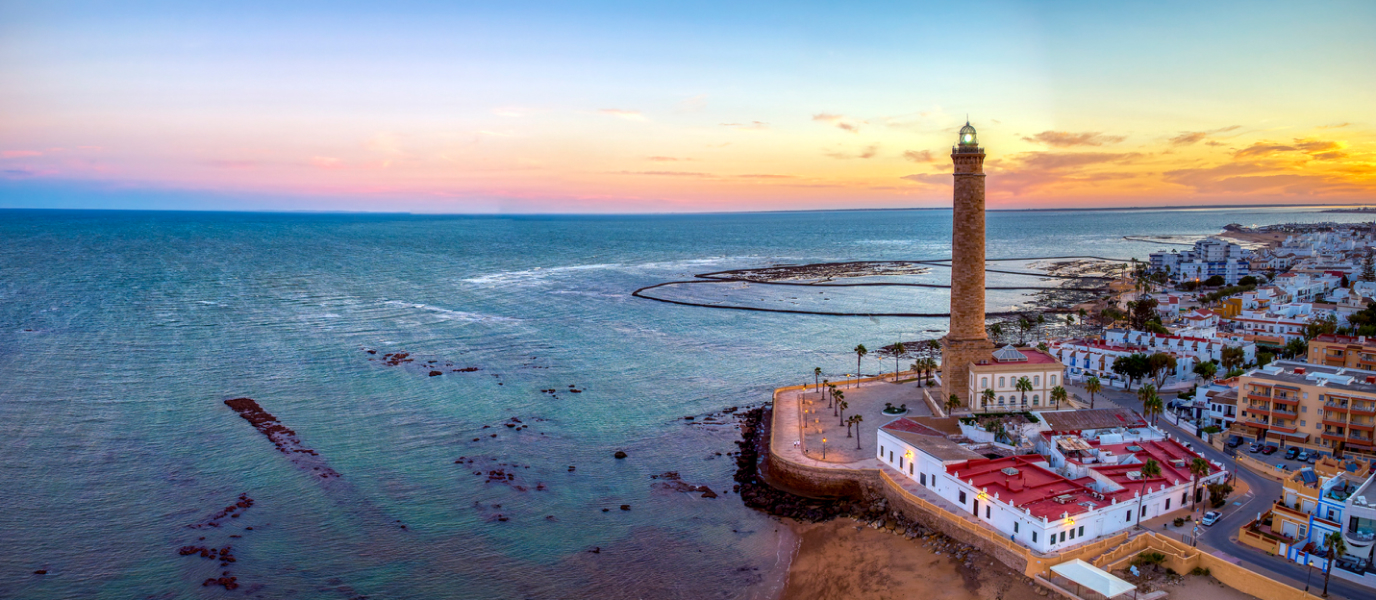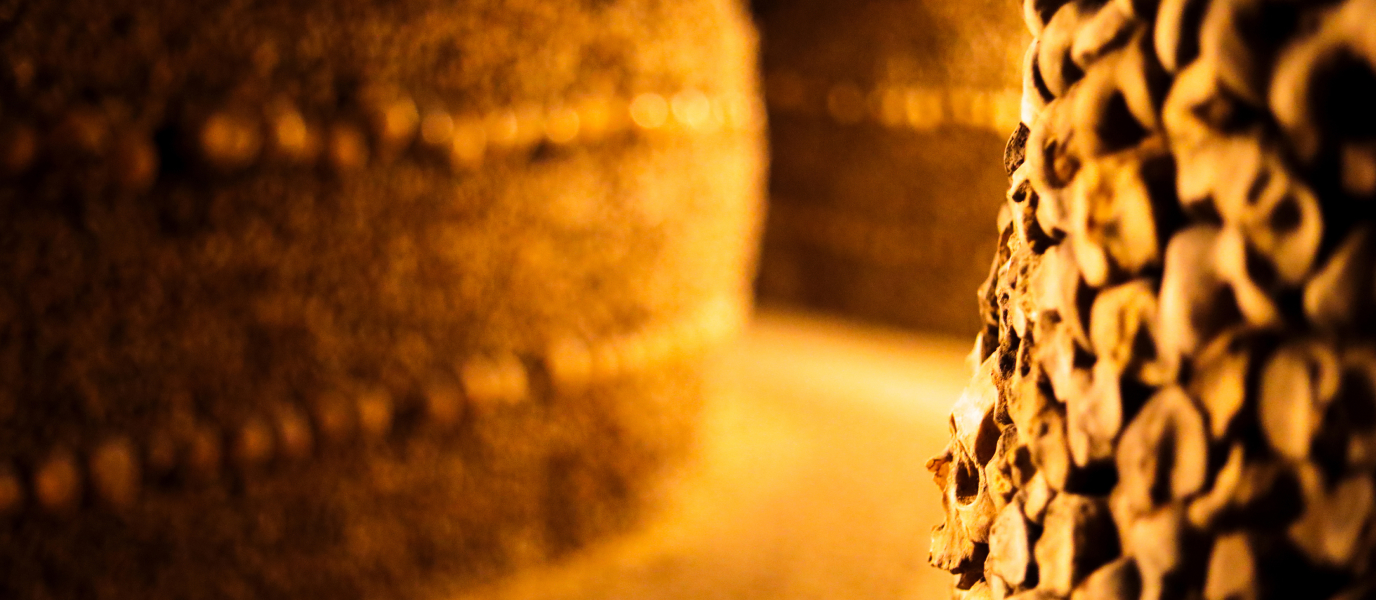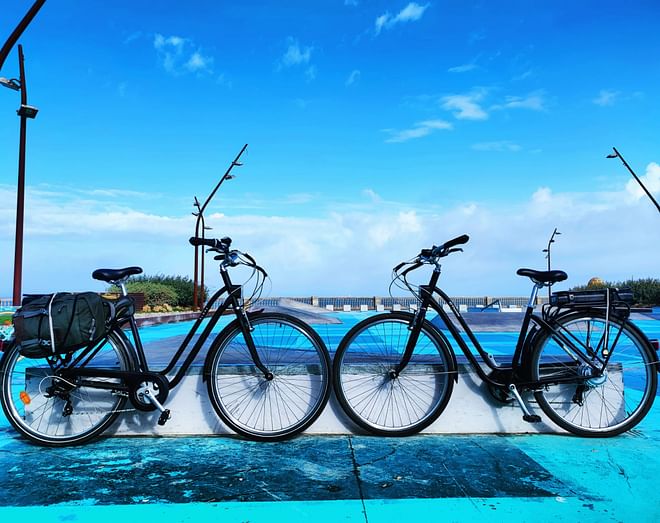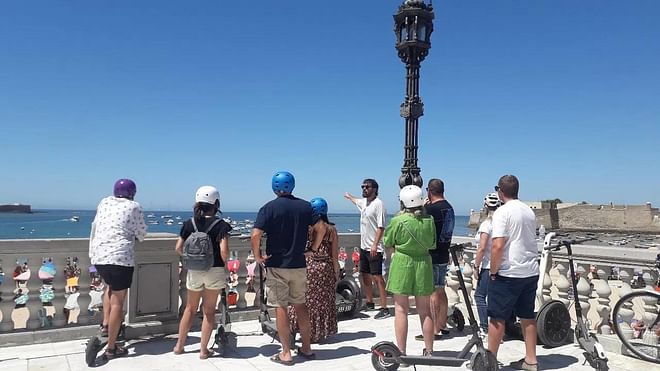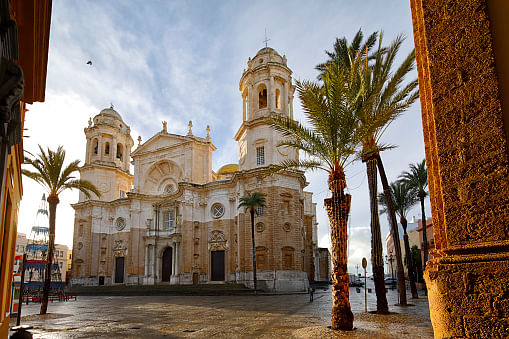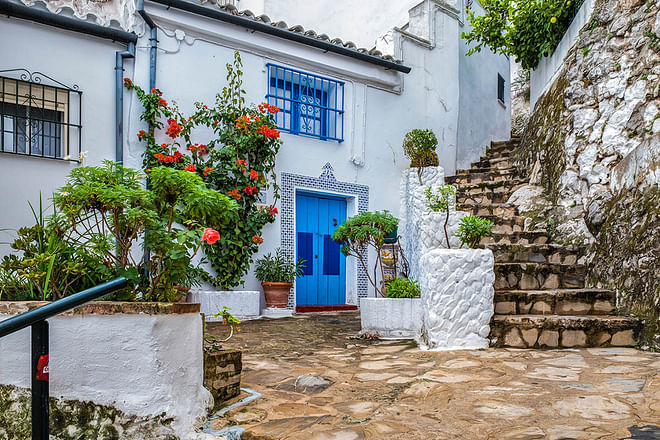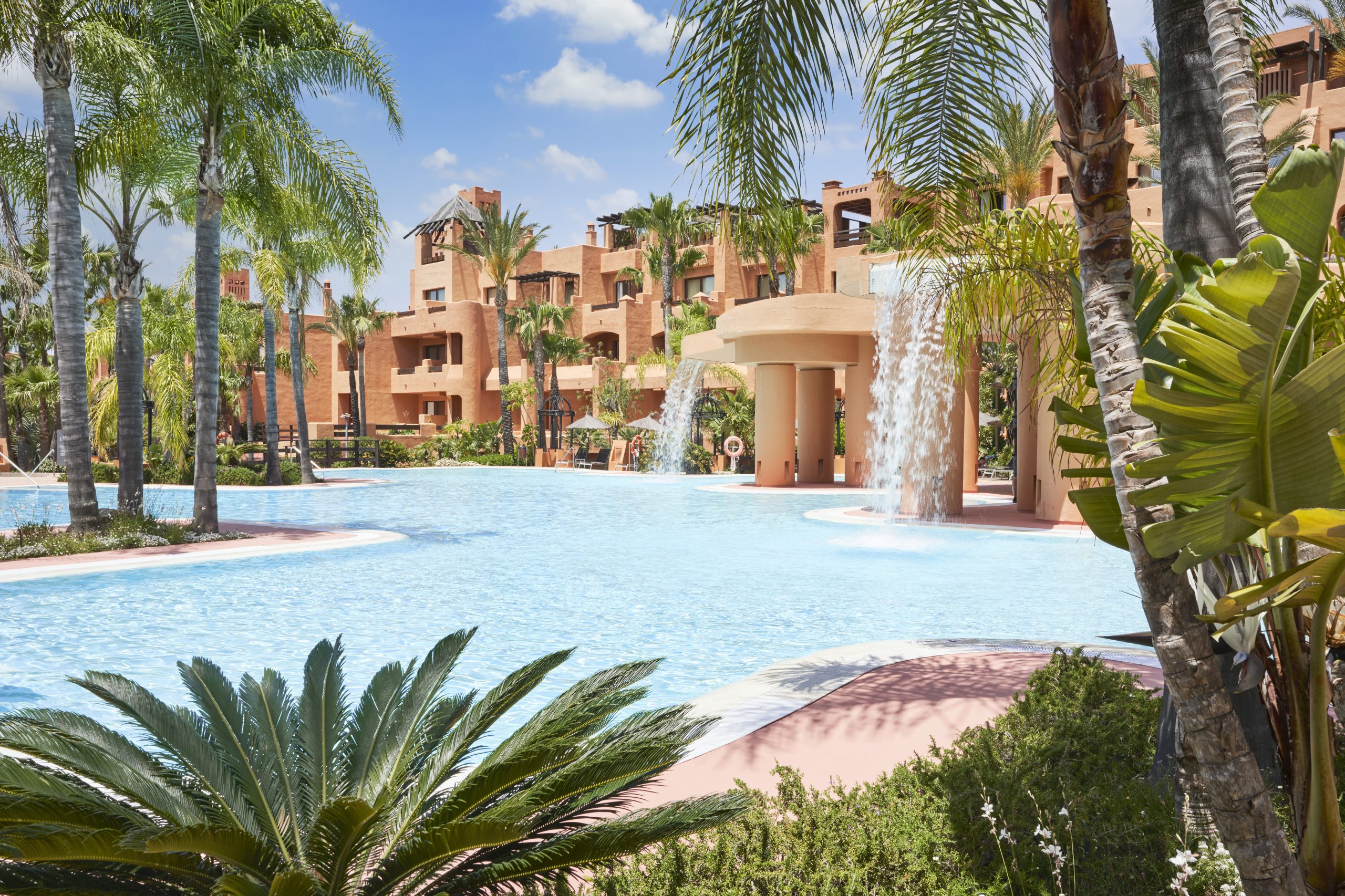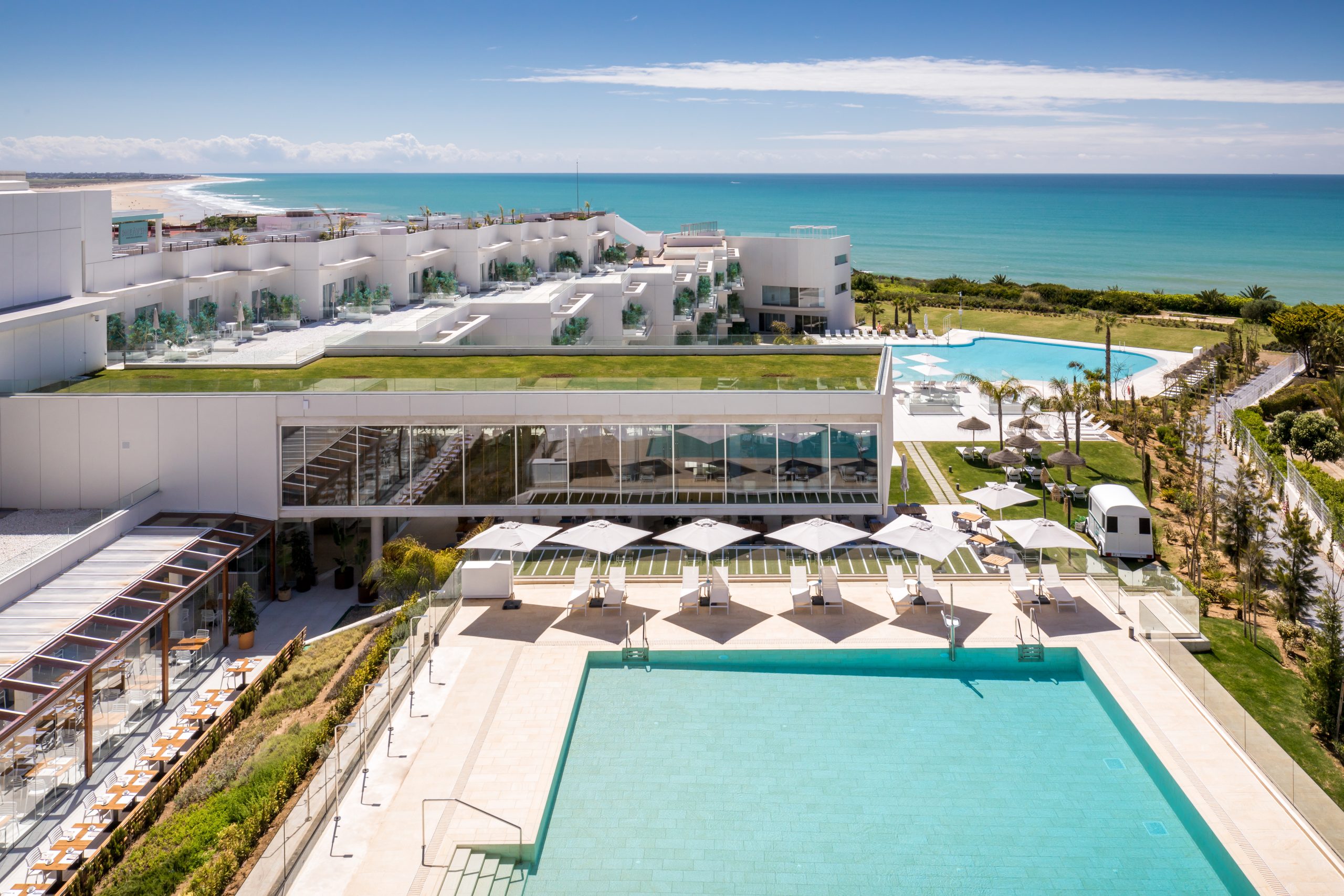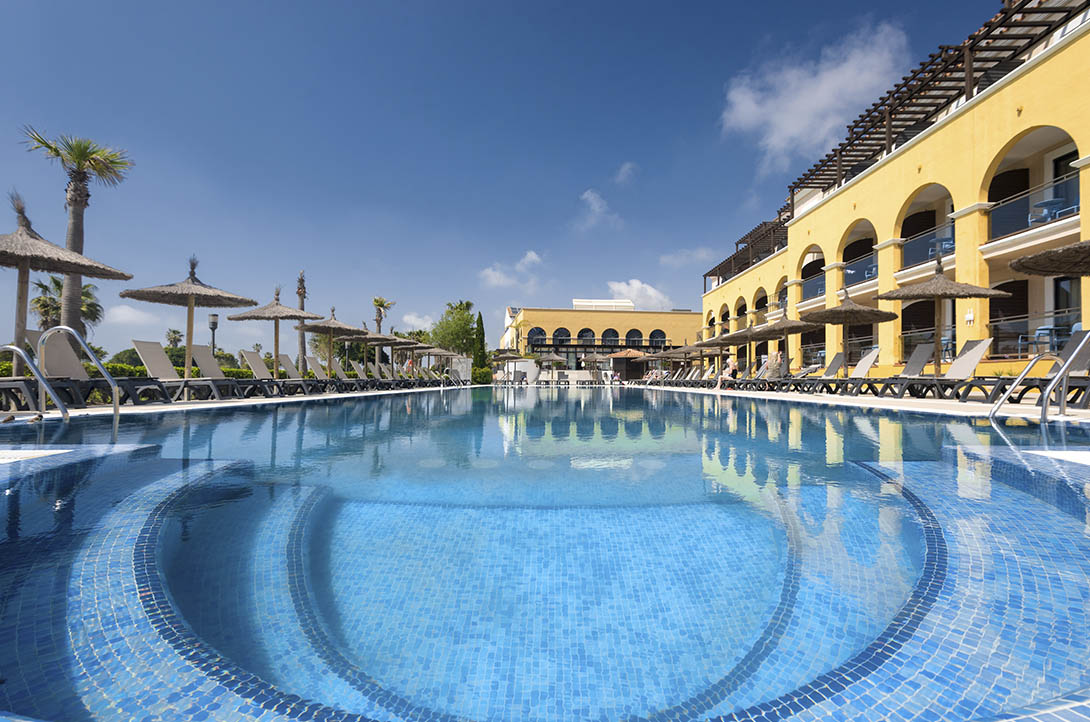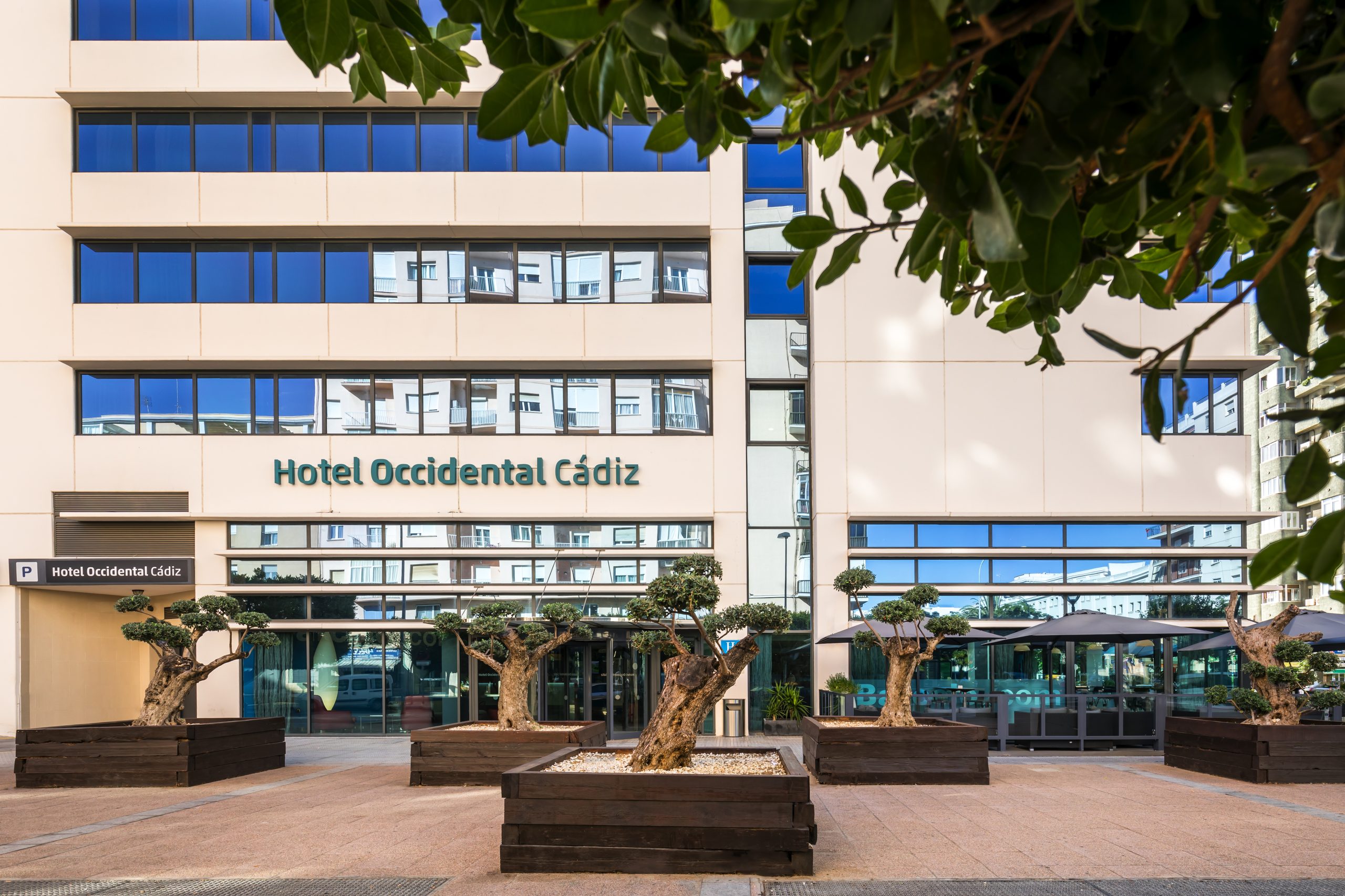The wind, the dunes and a past buried at the bottom of the ocean envelop Trafalgar Lighthouse in a magical atmosphere. Sitting down to contemplate this historic bastion, situated in the area of Caños de Meca (Barbate), is a true delight once the sun begins to set.
From afar, as if it were an oasis in the middle of the desert, the lighthouse’s extraordinary 34-metre-tall outline can be made out. Pristine and white before the immensity of the ocean, it is situated in an area replete with golden-coloured dunes, long beaches and vegetation that sometimes reaches all the way to the sand. A wooden walkway flanks the coast, crossing cliffs, from where you can see the diverse blue tones that the ocean takes on due to the current.
Beaches around Trafalgar Lighthouse
The walk from the village of Caños de Meca is some two kilometres and can be completed along the coast. The first section is a sandy stretch peppered with rocks (for this reason be careful when swimming). On the second stretch you will cross the Cala del Varadero cove or Marisucia beach, an idyllic inlet where jetsam from the sea is deposited when the easterly winds blow. Scuba divers often use the lighthouse as a starting point for their dives. The easterly winds also make it the best kitesurfing centre on the cape.
The path continues with another rocky stretch where shellfish catchers usually operate. When the tide goes out, along the coastline you can see the enormous platform reef that surrounds the cape. According to local people, the unusual circular formations that can be seen carved into the rocks owe to the millstones that were once extracted.
After crossing the coves, you will come to the lighthouse’s promontory, from where you can enjoy views of the tombolo of Trafalgar and the beaches situated to its left and right. Centuries ago, this strip of sand was an island and today it is declared a Natural Monument.
From the hill you can head down to Faro de Trafalgar beach, an enormous unspoilt cove with fine, golden sand that stretches for two kilometres from the cape all the way to Zahora beach. In the area you must always exert caution due to the riza de Trafalgar, underwater currents that come from different directions in the Strait of Gibraltar and are often violent and dangerous. It is advisable to keep away from the shore in order to avoid breaking waves and being swept along. On the other hand, since it is an undeveloped area, you can also find completely deserted stretches where you can enjoy the tranquillity and watch the sunset.
Further along is Zahora beach, a calm place that is perfect for relaxing. In winter it is usually empty and even in summer it is frequented by few people. The area is often used for skimboarding (surfing on waves along the shore) championships. If visibility is good, you can see as far as El Palmar beach from the cape. Stretching for eight kilometres, it is a perfect place for a walk any time of the year. The beach is accessed by wooden walkways so as to preserve the coastal dunes. Moreover, it boasts numerous beach bars and craft markets.
A view to the past
During Roman times, it was the site of a temple dedicated to the god Juno. Many divers claim to have seen its remains and, in particular, its sacrificial altar, beneath the surface at Cape Trafalgar. Later on, in the ninth century, the Muslims built a settlement whose remains lie next to the lighthouse.
In 1805 (little over 200 years ago), one of the most famous and bloody battles in history took place. French and Spanish ships clashed against the British fleet of Admiral Nelson, (he led them to victory in some six hours, although he died from a gunshot wound that same afternoon). During the battle, 60 ships bombarded and collided with one another, with some sinking to the bottom of the ocean floor on the Cádiz coast. With over 5,000 dead and 4,000 injured, the splendour of the Spanish navy was finally finished with.
These days you can dive around the site and marvel at the remains of ships from that period (during the battle the French-Spanish fleet lost 23 out of its 33 vessels). In 2010, the Spanish press reported on the discovery of button 79, which came from a French nineteenth-century uniform, which could help locate the exact site of the remains of Fougueux, a French ship that sunk with 500 soldiers on-board during the Battle of Trafalgar.
In 1860, little over half a century after the famous battle, Trafalgar Lighthouse was erected in a place steeped in history. Long before the battle, pirates of Berber origin used to attack the area, and, in order to defend against them, Philip II built a watchtower (whose archaeological remains can still be found). Nevertheless, they were not the first, as the Romans had already established a fish nursery and salting factory long before. Who knows what other secrets Cape Trafalgar holds.



























































